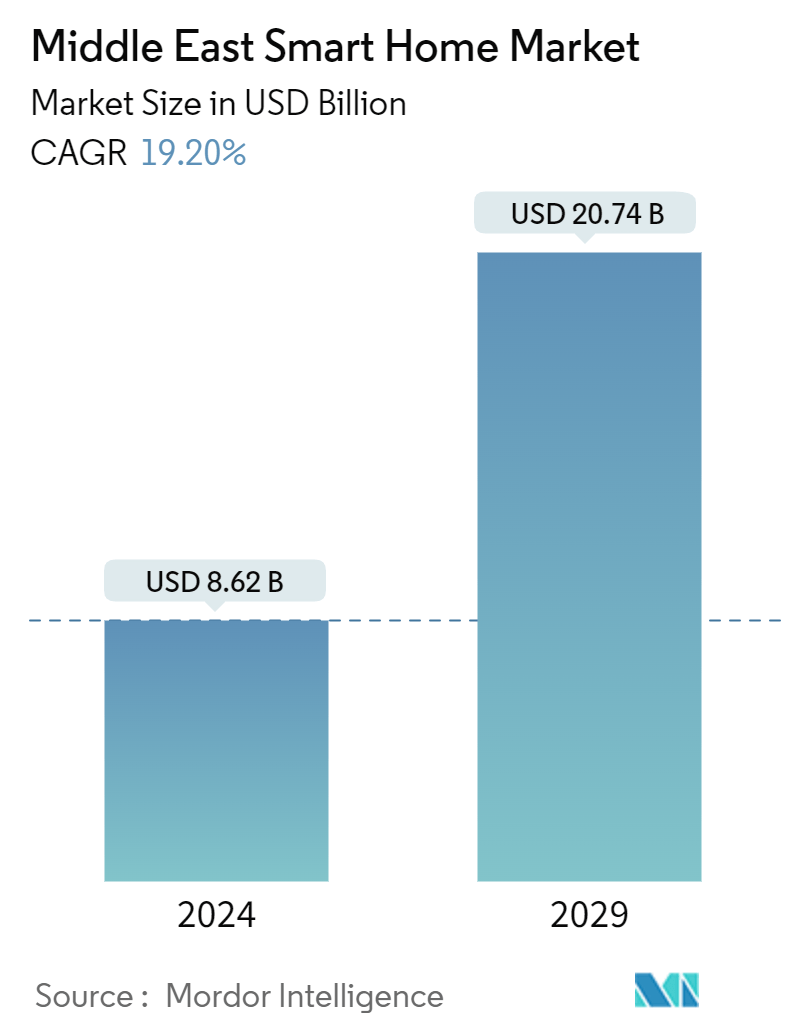Market Size of Middle East Smart Home Industry

| Study Period | 2019 - 2029 |
| Base Year For Estimation | 2023 |
| Market Size (2024) | USD 8.62 Billion |
| Market Size (2029) | USD 20.74 Billion |
| CAGR (2024 - 2029) | 19.20 % |
| Market Concentration | Low |
Major Players
*Disclaimer: Major Players sorted in no particular order |
Middle East Smart Home Market Analysis
The Middle East Smart Home Market size is estimated at USD 8.62 billion in 2024, and is expected to reach USD 20.74 billion by 2029, growing at a CAGR of 19.20% during the forecast period (2024-2029).
- The smart home market in the Middle East is experiencing a significant growth trajectory, driven by increasing disposable incomes and a tech-savvy population. Consumer demand in the region is gravitating towards enhanced security systems, energy management solutions, and smart entertainment devices. The high penetration of smartphones and internet connectivity in the region is a pivotal factor enabling the seamless operation and control of smart home devices. According to data published by GSMA, the smartphone penetration rate in the Middle East is more than 76%.
- Moreover, the affluent consumer base is increasingly inclined toward adopting cutting-edge home automation systems that offer convenience, security, and energy efficiency. As a result, smart thermostats, lighting controls, and automated security systems are seeing robust demand.
- The market is also characterized by global tech players like Apple, Amazon, and Google, alongside regional players who tailor their offerings to meet local preferences. Additionally, there is a growing ecosystem of startups that are innovating with region-specific smart home solutions, contributing to market diversity and competition.
- The technology is becoming prominent is countries such as United Arab Emirates and Kingdom of Saudi Arabia due to its affordability because of high income levels. Smart home voice activated devices such as Alexa have become popular due to ease of use in terms of controlling lighting, air conditioners, cameras and TVs. The rapid adoption of smart home technology has streamlined everyday tasks for the tech savvy customers.
- According to a report published by Amazon in January 2024, customers in Middle East are widely engaged for the second year in a row with 14 interactions a day per customer.
- In 2023, Alexa saw a 40 percent increase in monthly active users in the region, with Alexa interactions growing by 30 percent compared to 2022. Throughout the year, Alexa switched lights on and off over 24 million times in Saudi Arabia and the UAE alone, indicating a significant surge in engagement. As the region embraces digital transformation, integrating smart home technologies is poised to become a standard feature of modern living.

